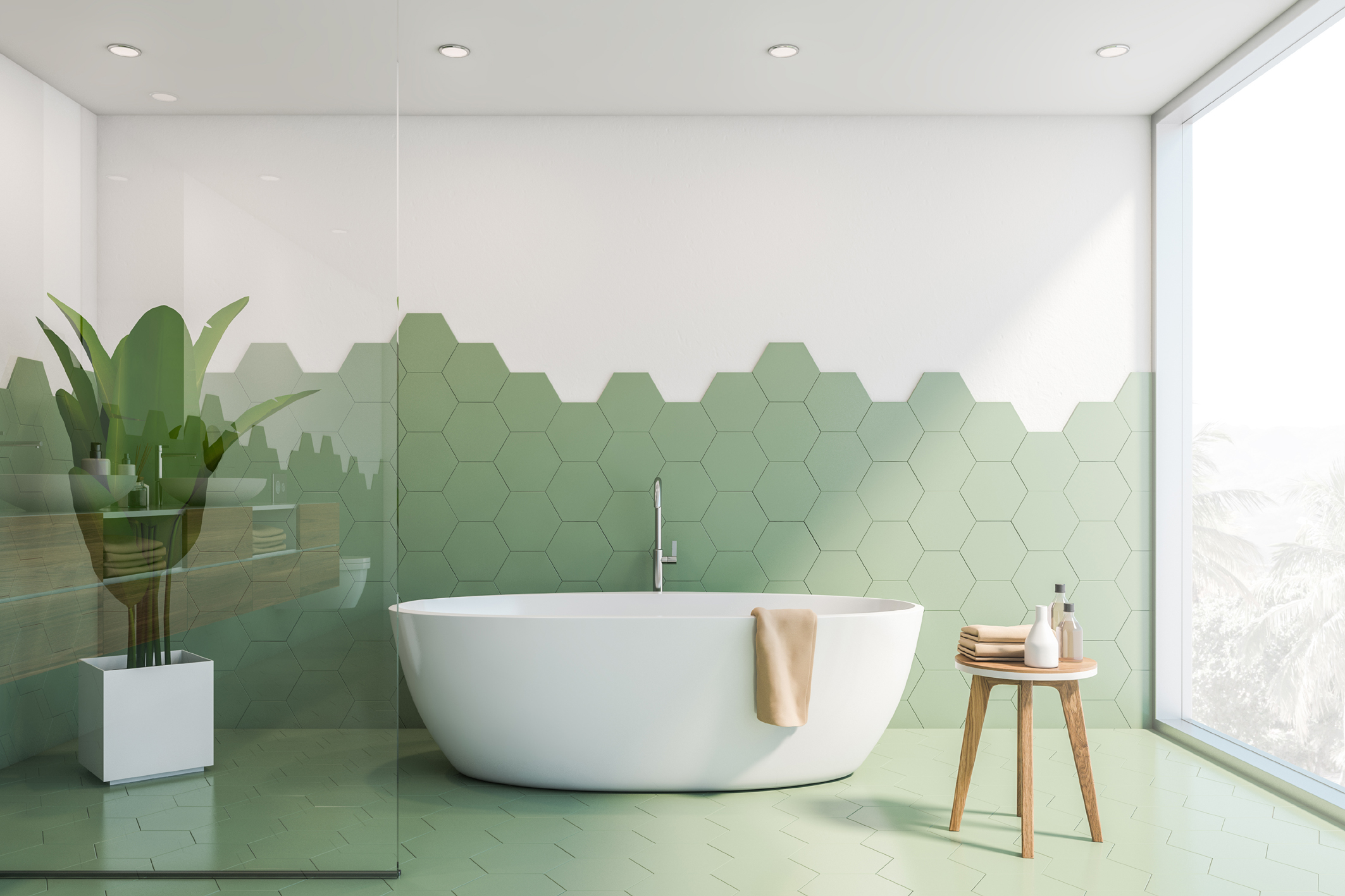Wall tiles: Pretty protective
Good looks, excellent hygiene and a long service life: tiles are still the material of choice in today’s bathrooms. More and more often, they are also used on walls as an intentional design feature. Our expert shares some useful design tips and gives advice on how to properly install and handle this popular material.
Tip 1: Avoid wild patterns in small bathrooms
A multitude of colors, shapes, materials and design options – the huge variety of wall tiles is simply amazing. Nowadays, tiles in bold colors or pastel shades as well as tiles imitating the natural look of wood or stone are very much in vogue. But also tiles of purist or minimalist design are still very trendy. But beware: Fancy patterns are only suitable for large rooms of uniform design, not for small bathrooms where they create a sense of clutter or confinement.
Tip 2: Floor-to-ceiling tiles have practical advantages
Floor-to-ceiling tiled walls in bathrooms offer better protection against mold and are easier to clean (especially large formats) than other wall coverings. Only the joints need to be cleaned regularly. Since most cleaning agents are acidic, they must only briefly be allowed to act on the joints in order to avoid damage. Tiling only the bottom half of the wall and covering the upper half with woodchip wallpaper creates a more homely atmosphere. The advantage of woodchip wallpaper is also that it can be quickly adapted to new home trends by simply giving it a new paint coat. However, the untiled wall areas remain susceptible to mold attack and mildew stains. If you want to avoid the mold problem, apply a plaster coat (alkaline) instead of wallpaper. And: Take care to always wipe the tiles with a dry cloth after taking a shower!
Tip 3: Only use building materials that are healthy for living
If tile adhesive and grout mortar have been awarded the EMICODE® quality seal, you can be sure that the wall and floor coverings in your home will be installed with ecological and healthy materials. The prestigious certificate is only granted to products that have been proven to be very low in emissions. Compliance with the predefined emission limits is verified by independent laboratories using the so-called test chamber method. Regular unannounced spot checks monitor the long-term compliance.

Photo: ©denisismagilov/stock.adobe.com/GEV
Do You Have Questions?
If you have any questions on certain topics or want to contact us for another reason, please contact us by phone or email.
Phone: +49 (0)211 843 449 – 01
info@emicode.com
Share article on Social Media:
